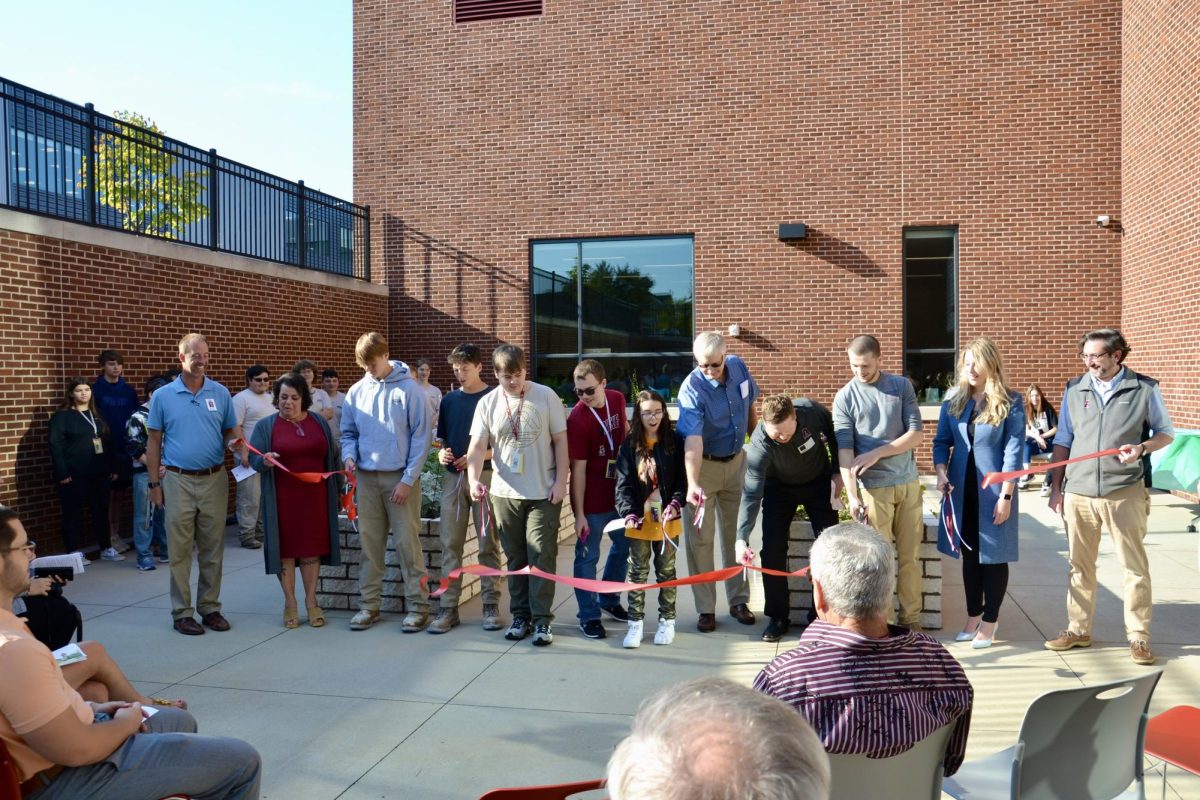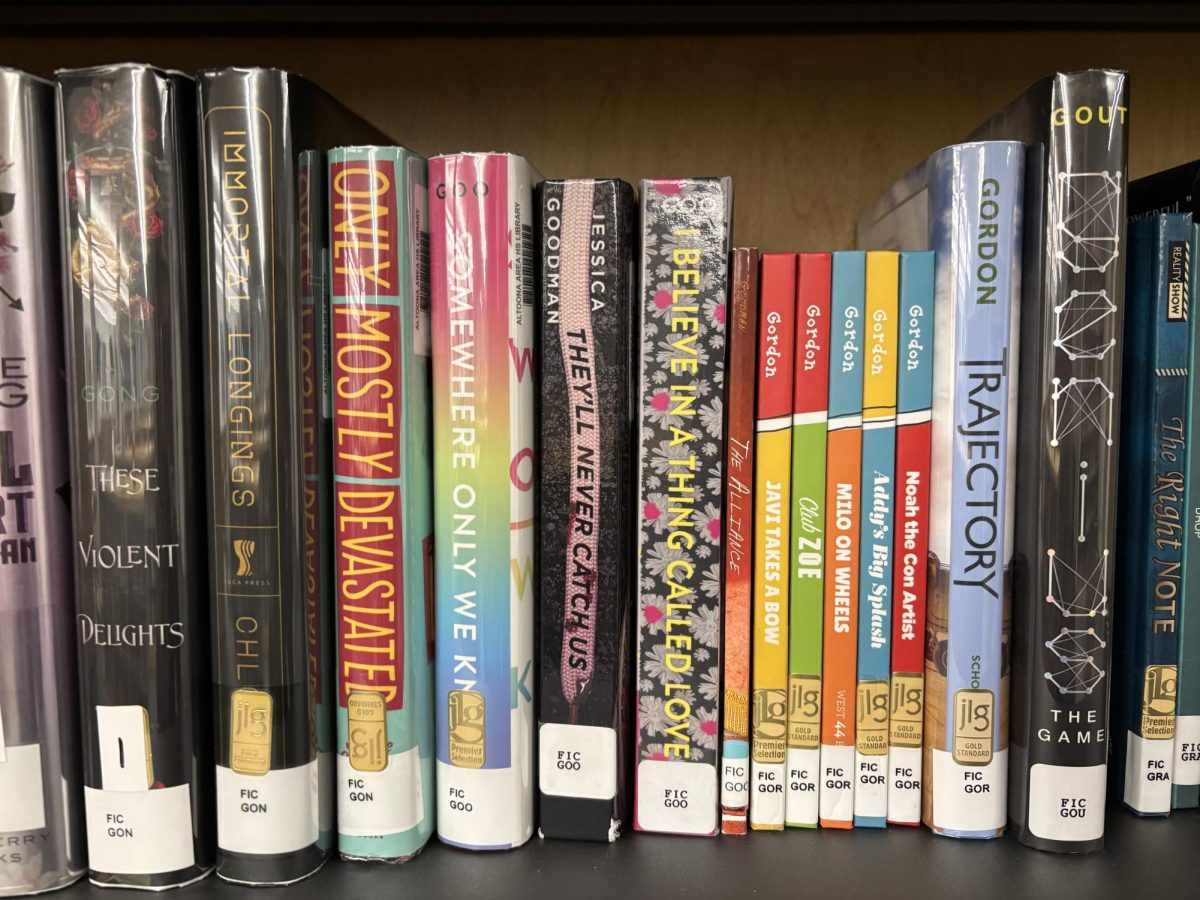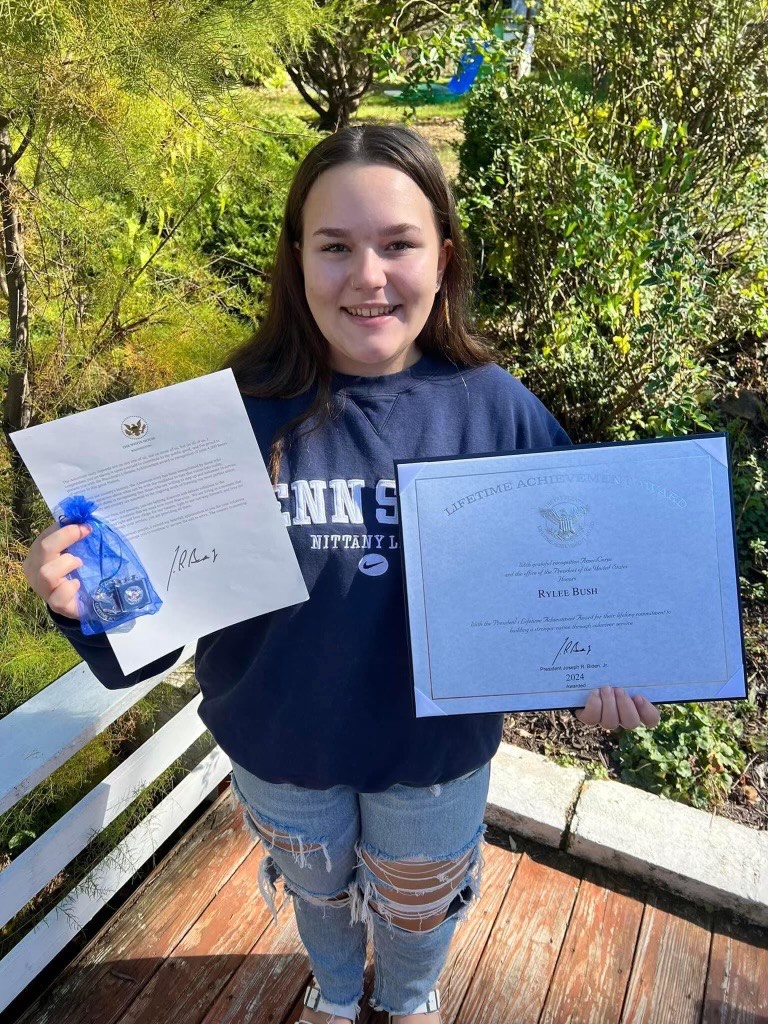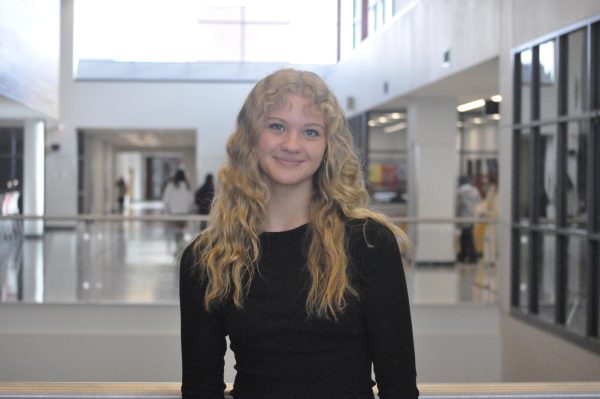Two years ago special education teacher, Maria Tyger, approached her colleague, Paige Matteson, proposing the idea of installing a sensory garden for their students.
Last fall, Tyger decided to move back to Pittsburgh, leaving Matteson with the idea still stuck in her head. With no clue on how to proceed with the plans half created, Matteson was still determined to bring Tyger’s vision to light. On Sept. 21, 2023, the sensory garden finally came to fruition, and all the effort put in throughout the past two years took the form of vibrant lavender, fresh herbs and shiny waterfalls.
“My favorite moment was getting to stand with some of my students and all the students who helped build the garden. It was a nice day—a beautiful day,” Matteson said.
The day went according to plan: homemade food cooked directly from the ingredients grown put out to share, the school board, GACTC, retired and returned teachers all in attendance, however; despite the garden being opened and seemingly finished, this was just another step within a bigger picture.
“It’s [the sensory garden] not actually done yet,” Matteson said. “I know we have made an immense amount of progress, but the goal is to add a pergola in the middle, picnic tables for students to have lunch at, and even getting the art department to paint murals for the brick walls⸺but, to see it get to this point has been a huge relief. There were many points when we thought we weren’t going to make it.”
The rush to get the garden done was something kept behind the scenes. School was let out on June 2, and the participants helping put the garden together got to put all the plants in the planters on June 1. Not to mention that the masonry teacher at the GACTC, Bill Doubt, was planning to retire once the school year was over, which put a certain limit on how much time could realistically be spent on the garden.
“I came in a few times a week during the summer, and my class has an extended school year throughout July, so they were able to take care of the garden for the whole month. They were able to harvest the fruit to dry it or freeze it, so now we get to use that in our kitchen,” Matteson said.
Besides new structures being added, Matteson and her students were able to use the garden to expand their lives within the kitchen, opening up freshly grown foods to the rest of the school.
“We have tea that we’re going to start selling on the coffee cart that we’ve made with all the herbs we’ve dried. We’ve already made raspberry sauce that we served at the ribbon-cutting ceremony. We have been saving raspberries since mid-July. Then, we got to make some lavender shortbread. It was a lot of fun.”
As bigger things are constantly in the works inside Matteson’s mind, it’s been a time of reflection and appreciation for herself and all the people involved in the project. The garden has provided a newfound aid to all of the special education students, as well as the rest of the school itself.
“As a whole, it brought everyone together,” Matteson said. “My students got to make friends through this project, and that goes for other classes too. There have been so many students in the school who wanted to come down to help plant, and they formed a lot of friendships. The cool thing, too, is some of these kids that helped said to me: ‘This is the first time my name has ever been in anything good.’ It’s cool.”
As for the future—it’s partially unclear. Matteson strongly believes that this project might never have a set ending point, and the goal is to keep expanding and expanding throughout the upcoming years.
“As of right now, the garden is already doing what we intended it to do. Students are already using it to regulate their emotions, but we hope other teachers will bring their classes down to enjoy the space, too. It’s just gonna keep building over the years, which makes me super excited to see how it turns out,” Matteson said.
What used to feel like a drab scenery for students walking the hallways has been transformed into something that makes school feel a little bit more like a home. From the vegetables growing under the soil throughout the winter to the flowers that blossom in the spring, the sensory garden stands as a symbol of growth and acceptance for many years yet to come.









